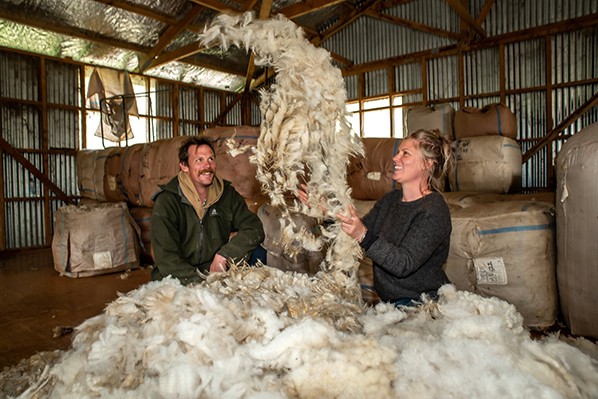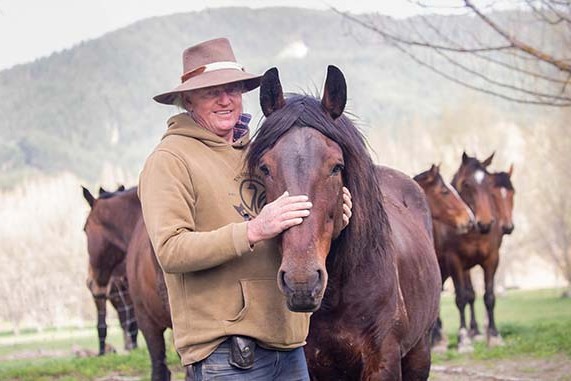Wild for pet food
Hanging out of a helicopter to shoot wild game is now a weekly jaunt for Nelson hunting buddies Blair Chapman and Pete Kinane who have turned their hobby into a premium pet-food business, Anne Hardie writes.

Hanging out of a helicopter to shoot wild game is now a weekly jaunt for Nelson hunting buddies Blair Chapman and Pete Kinane who have turned their hobby into a premium pet-food business, Anne Hardie writes.
WILDHQ WAS BORN OUT OF THE March 2020 Covid-19 lockdown when the commercial helicopter pilot and former police dog handler had a lightbulb moment as they passed the time chatting on the phone. They could combine their skills and turn hunting into a business that provided nutritional pet food from raw, wild game that were damaging habitats.
A year later, they have an abattoir up and running and a small team to help them turn their hunting expeditions into a range of products that are fully traceable back to the tussock tops or river valleys from where they have sourced the wild game for each batch. So far deer make up the bulk of their pet food, with goats hunted on the ground, and they have plans to hunt both wallaby and tahr in future. Each meat will be used in different recipes rather than mixed, as Blair and Pete believe whole-prey recipes are best.
Blair had a long history of culling deer through his previous business Mt Hutt Helicopters and remembers one day when they culled 1800 animals. Good meat went to waste, but now when they do their part in the deer cull, the only part of the animal left behind is the gut bag.
The carcase is turned into nutritionally designed meals through to treats and chews, including air-dried tracheas, liver, tendons and sinews. Hooves, shanks and antlers are chews, but Blair says they don’t shoot any deer with trophy antlers, choosing to leave them behind for recreational hunters.

Most of their hunts are on Department of Conservation land where they have a Wild Animal Recovery Operations’ concession to hunt, though they also get consent from private landowners to hunt on land that has a deer problem. Those areas need to be high country where the deer are not grazing on fertilised land, so the meat is truly wild.
“If landowners have a pest problem, we’d like to take it away from them,” Blair says.
Doing their part to control pests is one of the appeals of the business. As hunters, the native forests and alpine habitats are close to Blair and Pete’s hearts and they see the impact from introduced pests on that environment. Blair says their business will barely make a dent in the huge wild deer population. One recent drone count around the central North Island recorded 1700 deer in a group, while a couple of years ago 10,000 tahr were culled and left on the ground in South Westland.
So far, their business is processing about 50 deer a week as the men build up their customer base, but they would like to ramp that up to between 100 and 200 animals.
The team heads out before dawn for the hunt, with a chiller truck driven to the location to wait for the carcases. It usually takes two to three hours to shoot about 30 animals and Blair says trust in each other’s ability is crucial when shooting from a helicopter.
“You’ve got to have a lot of faith in the guy behind you shooting. A bullet in the wrong direction can go through the blades.”
Likewise, Pete says he depends on his pilot when he is leaning out of the helicopter. He is strapped in, but it’s good to have smooth flying when you have a gun in your hands and leaning over the edge.
The animals are gutted on site and lifted to the waiting truck where they are in the chiller within 30 minutes of being shot. It ensures the meat is good quality when it is processed into products, and for that reason they are not interested in hunters bringing in carcases on the back of their utes.
Back at the abattoir, the meat, organs and bones go into recipes with kumara, carrots, and vitamins and minerals to add nutritional essentials. It has all been formulated by a pet nutritionist and there are no grains or fillers added to bulk it up. The mixes are sold raw and that is part of the plan to create a premium product. The aim is to set a high bar for raw pet food.
Marketing manager Jason Petterson says the argument for raw meat is pretty strong nowadays as the nutritional value is not reduced by cooking. WildHQ meals are sold as mince and medallions, mixed with other ingredients that are tested at Massey University to achieve a complete and balanced standard to worldwide AAFCO standards. The remainder of the carcase is used to make air-dried treats and chews. The air-drying technique has also been tested on medallions for potential export in the near future.
WildHQ’s key market is “pet parents” who treat their pet as one of the family and the typical house pooch rather than working dogs.
Blair says it is a premium pet food made from wild animals untainted by chemicals or other man-made substances such as pesticides, fertiliser, antibiotics and hormones. Hunting on Department of Conservation land requires them to be careful around 1080 drops, which are recorded online, enabling them to hunt well away from those areas.
They now have vets sending clients their way, especially those with pets with allergy conditions that don’t respond to the usual treatments and foods. Pete says there is no magic in WildHQ food and it simply offers a natural, honest, hypoallergenic approach for pet owners. He describes venison and goat as novel proteins that offer an alternative to animals with allergies.
So far, the hunts have focused on Marlborough, with plans to head further south as the business expands.
Blair and Pete’s long-term plan is to not only reduce pest numbers, but also rejuvenate the natural habitats to offset their carbon footprint. Part of that is already being done by supporting conservation charities that work to bring balance back to the biodiversity of the native landscape.




